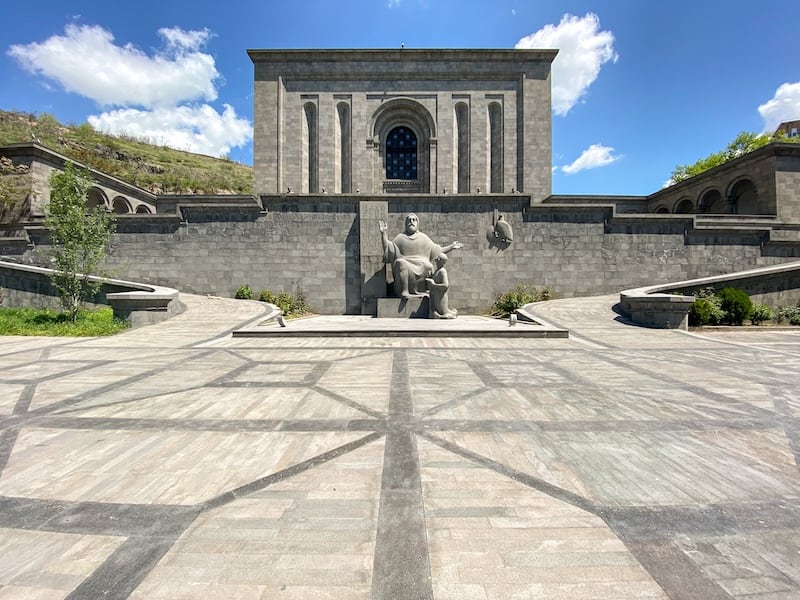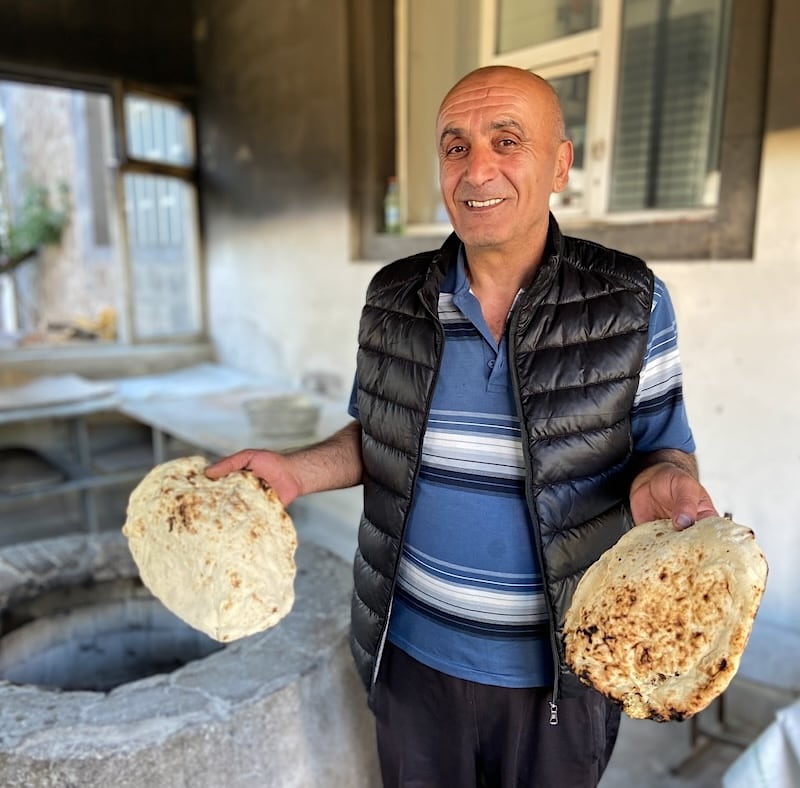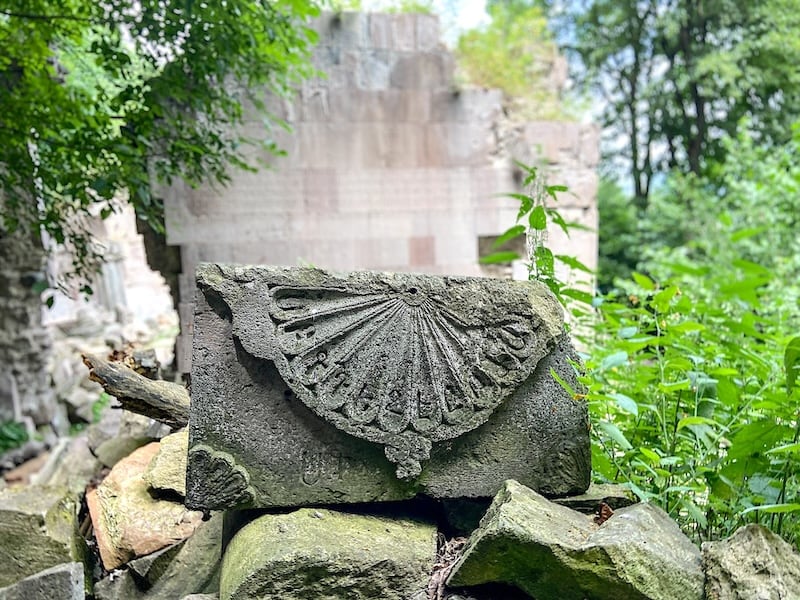Last Updated on July 28, 2025 by Aram Vardanyan
As an Armenian, I’ve always been curious about how interesting our language is to foreigners and whether there is interest among diaspora Armenians who don’t know the language to learn it.
In this article, I will talk about how to learn Armenian, its history, and its different dialects. I will also discuss the Armenian alphabet, showcase some facts about it, and discuss my preferred Armenian online courses.
Sign Up for a Free Month Online Armenian Course Now!
Armenian Online Classes for Everyone!Whether you’re interested in learning a new language or getting familiar with Armenian culture, I will discuss this complex topic in this article.
How to Learn Armenian + (the History)
Armenian is a complex, unique, and beautiful language and it is a national point of pride in Armenia. It is estimated that more than 7 million people speak the language worldwide, with only 2-3 million of these native speakers currently living in Armenia!
The Armenian language is popular, particularly with the Armenian diaspora, because it forms part of the cultural identity, connects people from different geographic backgrounds, and unifies Armenians worldwide.

You don’t need to learn the Armenian language when visiting Armenia, but it is certainly useful for you to understand some of its history and significance so that you can get the most out of your stay in Armenia – and if you’re feeling adventurous you can even try communicating in Armenian with the locals to enhance your Armenian language skills!
>> Learn Eastern or Western Armenian Online. Try one month free!
The History of the Armenian language
If you’ve heard of Mesrop Mashtots, that’s because he is a significant figure in Armenian history. In 405 AD, Mashtots created the Armenian alphabet.
He was a scholar, a nobleman, and briefly a monk, and he created the alphabet to unify the Armenian people and spread the Christian gospel. The alphabet he created consisted of 36 characters and was first used to translate the New Testament and the Hebrew Bible.
Before this creation, Syriac was used for liturgy, while Middle Persian and Latin were used for official communication, and Greek was used more informally.
Aramaic was also used. It is said that Mashtots created the letter ‘A’ first because it is the first letter used in the Armenian word ‘Astvatz’ meaning God in Armenian.

There are many monuments dedicated to Mesrop Mashtots that are very interesting to see if you’re visiting Armenia for the first time. Here are just a few in and around Yerevan:
- Mashtots Avenue: This is a wide avenue in the center of Yerevan. It is home to the Yerevan Opera Theatre, Matenadaran, the President’s Residence, and Yerevan State Marionettes Theatre.
- Matenadaran Institute of Ancient Manuscripts: Matenadaran is one of the most important and beautiful museums in Yerevan, featuring statues of Mesrop Mashtots and stone carvings of the Armenian alphabet.
- Armenian Alphabet Monument: The Armenian alphabet’s natural beauty and flow have made it a popular inspiration for Art in Armenia.
It is common to find postcards in Armenia, depicting the Armenian alphabet painted into beautiful bird shapes, or to see carvings, textiles such as rugs, and even dance, which honors the Armenian alphabet in all its forms.
Armenian Calligraphy and Alphabet Art
The Armenian alphabet’s natural beauty and flow have made it a popular inspiration for Art in Armenia.
It is common to find postcards in Armenia, depicting the Armenian alphabet painted into beautiful bird shapes, or to see carvings, textiles such as rugs, and even dance, which honors the Armenian alphabet in all its forms.
Museums and art galleries can be found in almost every corner of Armenia, and these beautiful art forms that combine language with creative expression must be seen to be appreciated!

By far the most extensive collection of Armenian calligraphy to be found in Armenia is at the Matenadaran in Yerevan, which has more than 17,000 manuscripts.
The museum is open Tuesday through Saturday, and tickets are available for purchase from 1500 AMD (4 USD).
Armenian Language Dialects
There are several distinct dialects of the Armenian language historically, and currently in use today:
- Old Armenian (Grabar),
- Middle Armenian (Mijin Hayeren)
- Modern Armenian (Ashkharhabar), is split into the Eastern Armenian dialect spoken in Armenia today, and Western Armenian.
About 50 dialects of Armenian were known before the Armenian genocide in 1915, and some of these small localized dialects can still be heard today.
However, in Armenia, you will hear Eastern Armenian spoken most commonly, followed by Russian. The eastern dialect is particularly useful for users familiar with other dialects, such as Western Armenian.
Although The Old Armenian dialect Grabar had been predominant in Armenian literature until the end of the 18th century, in the 7th century a variation of this (now called Middle Armenian) started to emerge in spoken language as a result of geographical influences, and by the 11th century it was also being used in texts.

In the 19th century, the dialects became so splintered, that it became necessary to standardize them and create a uniform set of languages that could be taught in schools.
Arabic, Turkish, and Persian loanwords were replaced with Grabar, and so formed the major dialects we know today: Eastern and Western Armenian.
Eastern Armenian was based on the dialects of Yerevan and Georgia, and Western Armenian was based on the then dialects of Turkey (Western Armenia).
How to Learn Eastern or Western Armenian
Although Eastern and Western Armenian share almost the same vocabulary, the differences in grammar and pronunciation between the two dialects are so significant that speakers of different dialects often struggle to understand each other!
If you are planning to learn Armenian for an upcoming trip to Armenia, or simply because you love the language, and want to sign up for Armenian classes, I recommend connecting with my friends at Tun Online Armenian School.
Why TUN Has the Best Armenian Classes
Tun has students in 28 countries and offers an Armenian language learning app with video lessons, games, Armenian flashcards, quizzes, tutor help, downloadable worksheets, and even audio files so you can practice speaking on the go!
How to Get Armenian Language Courses for Free
Another reason why Tun Online Armenian School is the best option is that you can join beginner or intermediate-level Armenian language courses, and you can choose to try 4, 8, or 12 lessons for FREE! Typically, the process of learning Armenian starts with the alphabet and pronunciation.
This is because once you know how to pronounce the letters in Armenian, you’ll know how to pronounce every new word you learn correctly, even if you are not so interested in learning to read and write in Armenian.
Once you’ve understood how to pronounce the letters correctly, it’s time to start vocabulary building!
And though it is tempting to learn numbers, colors, seasons, and days of the week first, focusing on the words you’ll use most commonly when speaking Armenian is more effective.

This is where online Armenian language lessons can help – because you’ll be learning words you can use immediately!
Once you’ve mastered Armenian pronunciation and vocabulary, it’s a good idea to start learning Armenian sentence structure and grammar. Tun Online Armenian School has a masterclass series on each of these topics and Armenian reading and writing for those who are interested.
With Armenian pronunciation, vocabulary, grammar, and sentence structure under their belt, learners usually benefit next from immersing themselves in the language.
This means surrounding yourself with other Armenian speakers, listening to Armenian music, watching Armenian movies, reading Armenian texts, and so on.
Learning the Armenian language can be a rewarding experience with the right resources and dedication.
Learn to Speak Armenian with the Locals
If you want to speak Armenian to the locals in Armenia, try to learn Armenian basic phrases first. I’ve listed some examples below that will help you get by on your travels in Armenia when you practice Armenian words with native speakers:
| English | Eastern Armenian |
| Hello | Barev dzez |
| How are you? | Vons es |
| Thank you | Shnorhakalutyun |
| Nice to meet you | Urakh em |
| Where is? | Vortegh e |
| How much? | Vorkan arjhe ays |
| Yes | Ayo |
| No | Voch |
If you need help with pronunciation, you can check out these pronunciation videos in both Eastern and Western Armenian.

But even if your pronunciation is perfect, Armenians are very hospitable people and they will appreciate you trying to speak Armenian, and will usually offer a helping hand too!
5 Interesting Facts About the Armenian Language
- The Armenian language has about 11,000 base words, but you only need a small fraction of these to become conversational.
- Armenian has six or seven noun cases but no gender! The only time you’ll see gender expressed in Armenian is with the occasional suffix -ouhi, which means we’re talking about a female.
- No sound is expressed in Armenian by combining two or more letters. For example, in Armenian, the sound ‘sh’ has its own letter (շ), as does the sound ‘ch’ (չ). In English, these sounds are made by combining the letters S and H, or C and H.
- It is said that the first sentence ever translated into Armenian from the Holy Bible was “To know wisdom and instruction; to perceive the words of understanding” from the Proverbs of Solomon.
- In ancient times, the letters of the Armenian alphabet were also used as numbers. The first 9 letters Ա to Թ expressed the numbers 1-9, the next 9 letters Ժ-Ղ expressed intervals of 10 (10-90), the next 9 letters Ճ-Ջ referred to the hundreds (100-900), and the next 9 letters Ռ-Ք referred to the thousands. It is for this reason that when you see ancient manuscripts or stone carvings in Armenian, you may not understand what is written – even if you do speak the language, because those Armenian letters may be referring to a date.

<<Learn Eastern or Western Armenian with Tun Online Armenian School>>
An Armenian language app, like the one offered by Tun Online Armenian School, can help you focus on the words you need to learn, so you can become proficient in the Armenian language much faster.
How to Learn Armenian FAQ
Is it Difficult to Learn Armenian?
Armenian is known to be a hard language, and learning Armenian can be quite challenging for many people. However, if you know other languages like Greek, it can be a bit easier for you to learn Armenian. In general, it’s all about the motivation of the person.
What is the best way to Learn Armenian?
There are several phases for beginners to learn Armenian or bush up their Armenian language skills:
- Watch Armenian TV shows or movies with subtitles.
- Read easy children’s books.
- Try to mimic Armenian words from online videos.
- Sign up for an Armenian online school for beginners.
Where Can I Learn Armenian Online?
Tun Online Armenian School is one of the most popular Armenian language online schools, where it is possible to learn either Eastern or Western Armenian by choice. With them, signing up for free Armenian online classes is also possible.
What is the Difference Between Western and Eastern Armenian?
Eastern Armenian is widely used in the Caucasus and the territory of the Armenian Highlands, while Western Armenian is used by Armenians who used to live in modern-day Turkey.
I have an article where you can read more in-depth about the differences between Western and Eastern Armenian dialects.
Which Armenian Dialect is Correct?
Even though the official language of the Republic of Armenia is Eastern Armenian and other dialects are excluded from educational institutions, it is impossible to say which dialect is correct or wrong.
Armenian is a rich and ancient language, and due to geographical and historical events, it has various dialects. In my opinion, there should not be a division or statement that one dialect is more correct than the other.
What is the Closest Language to Armenian?
The Armenian language is unique, but Greek is known to be one of the closest languages to it, although only slightly.
